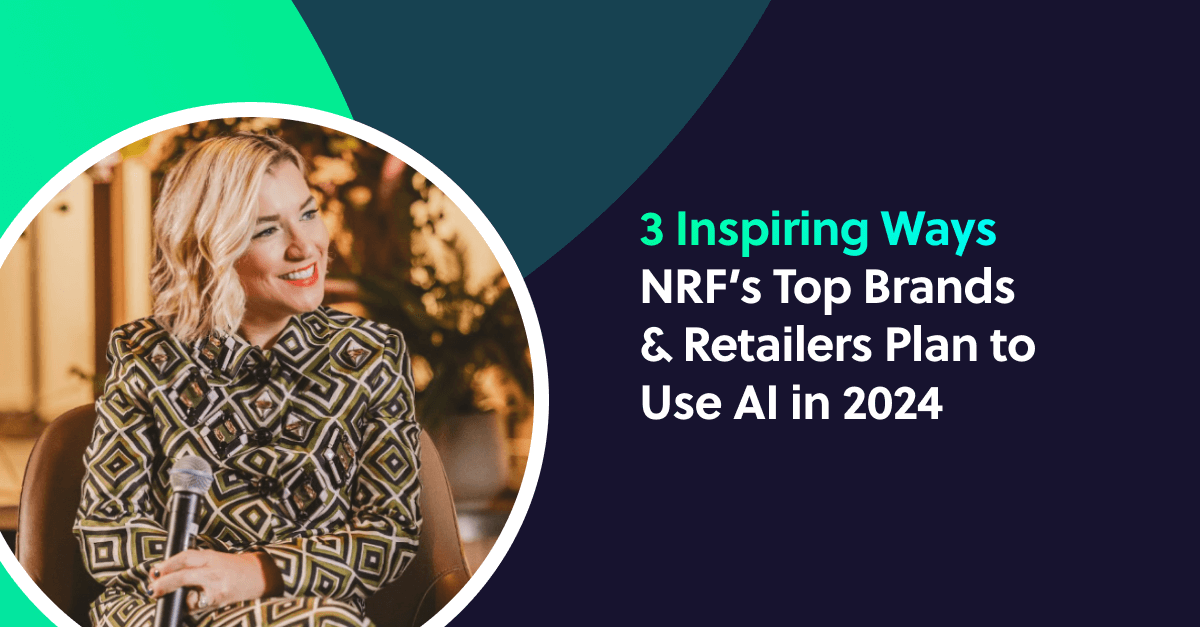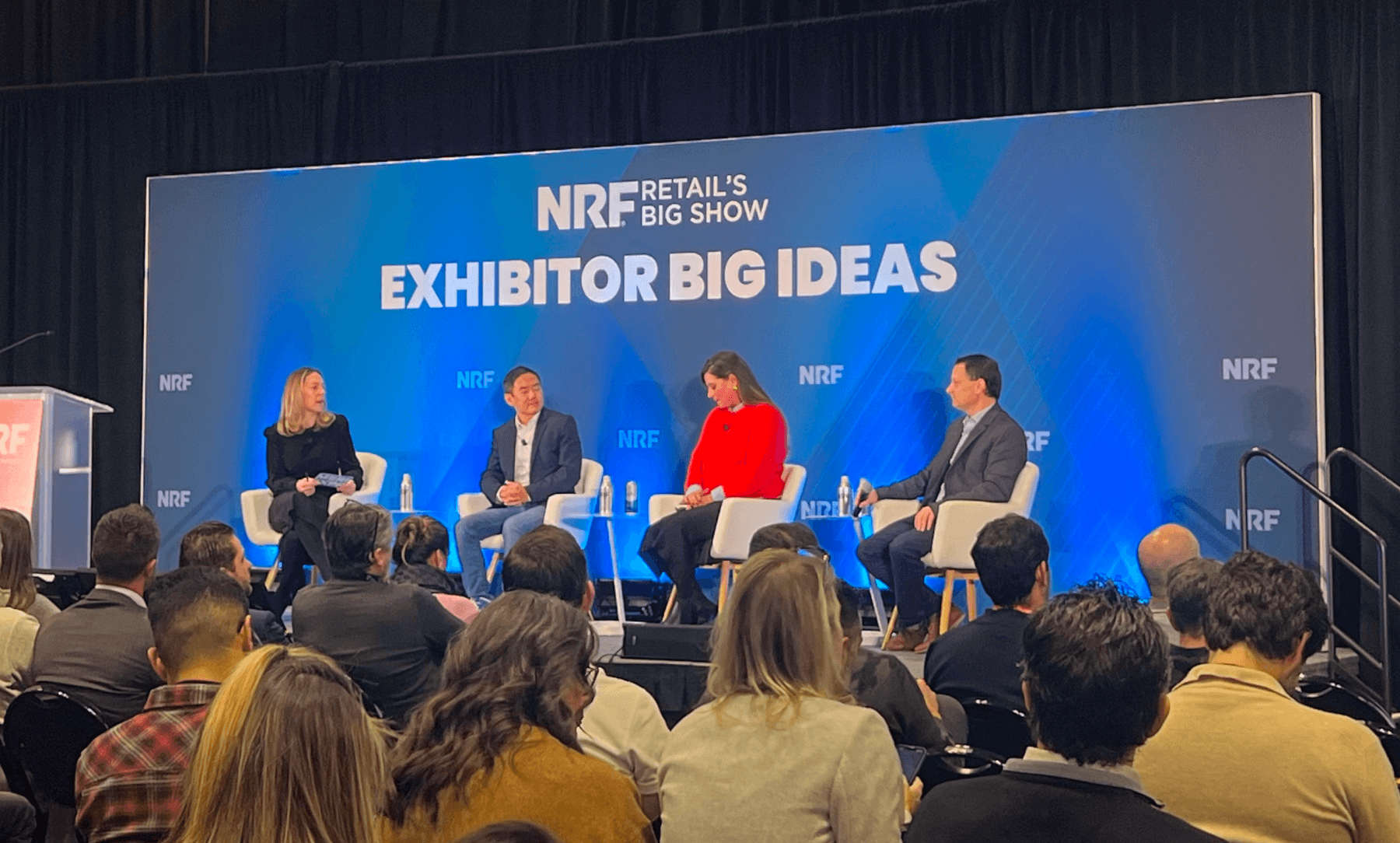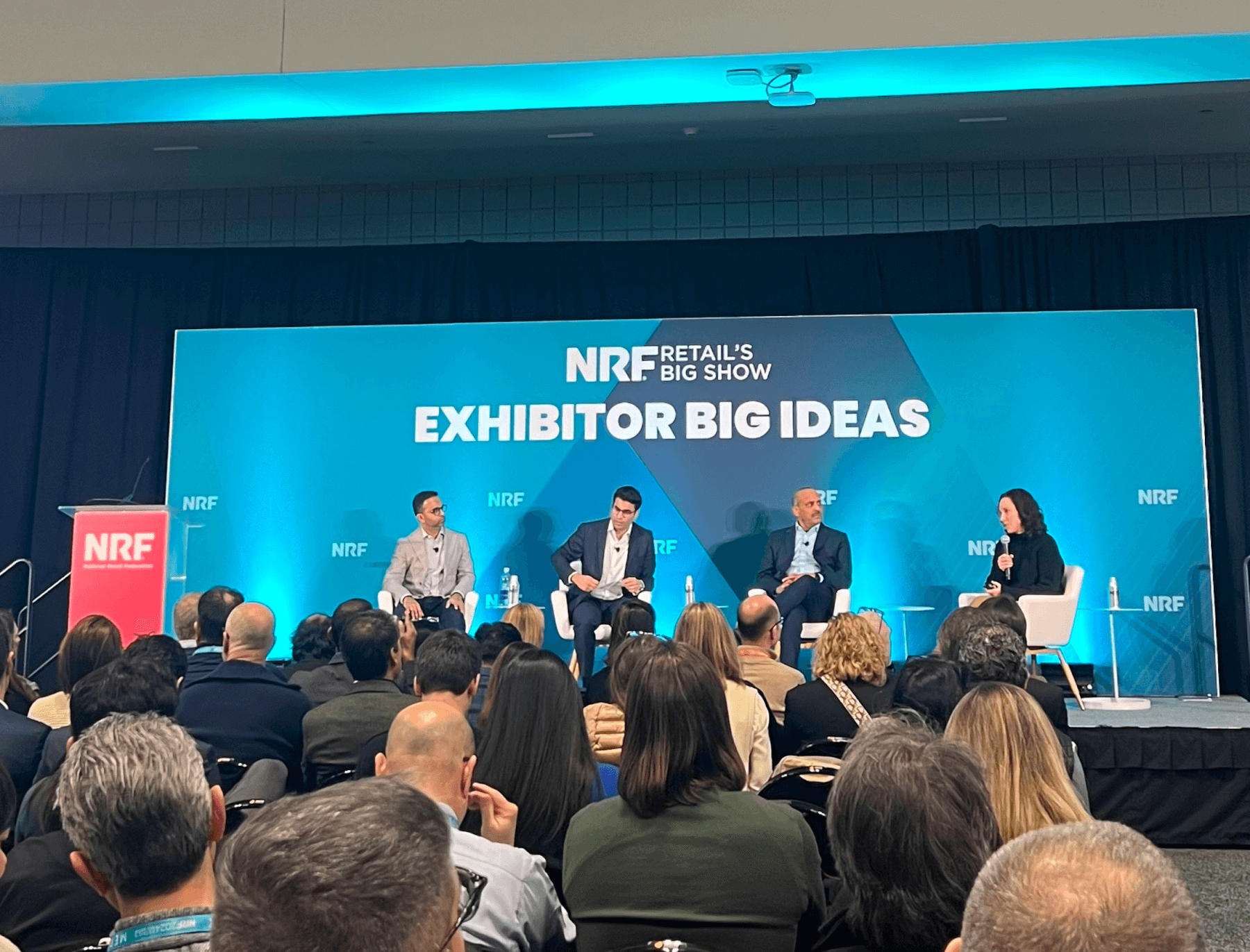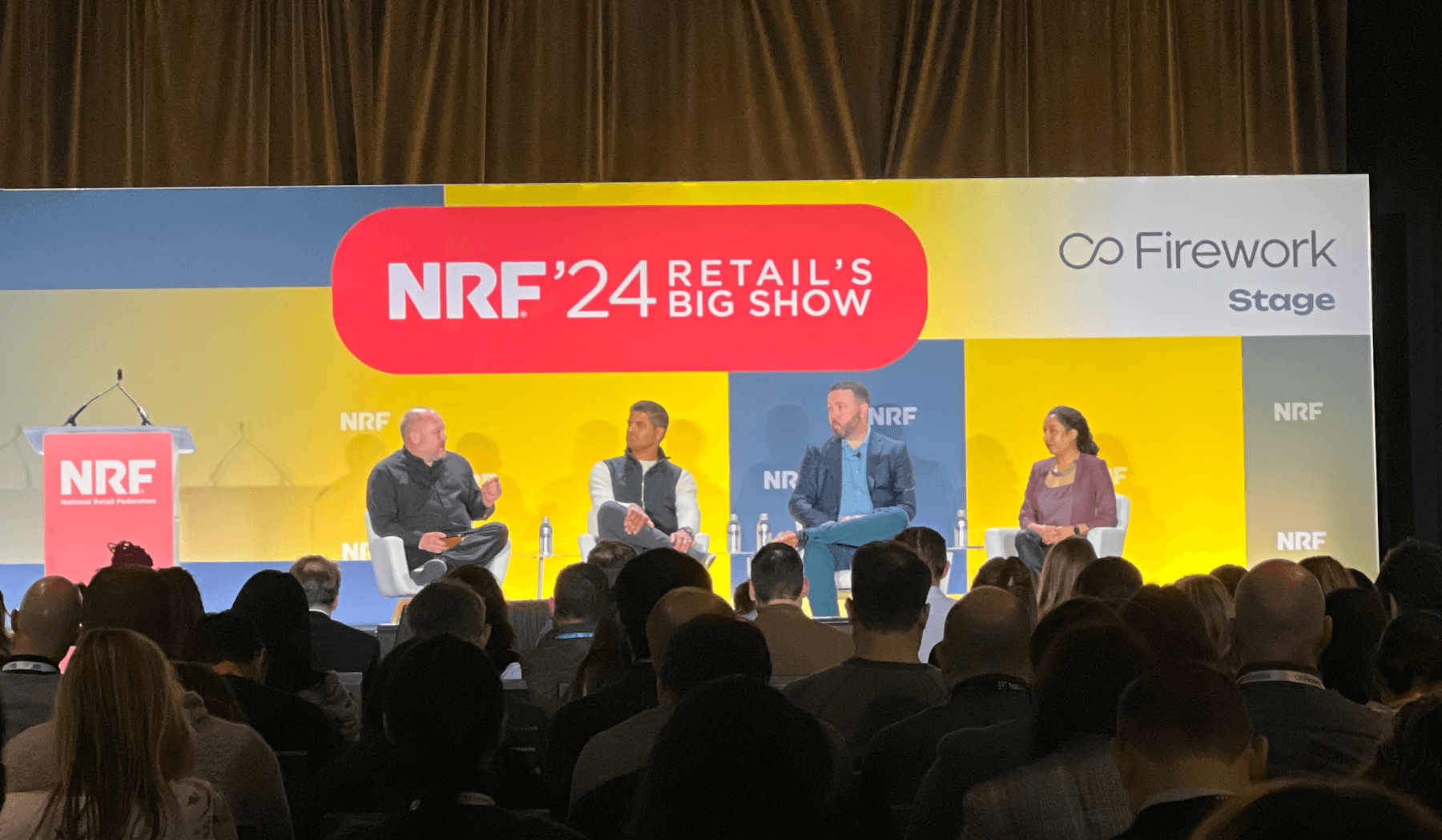Thought Leadership
3 Inspiring Ways NRF’s Top Brands and Retailers Plan to Use AI in 2024

The impressive roster of execs and thought leaders from the world’s leading brands and retailers at NRF 2024 left us with much to think about as we enter the new year.
Their session topics ran the gamut from omnichannel transformation to harnessing data to stay connected to consumers — but there was a clear star of the show: AI. Sometimes it was the session headliner. Sometimes it popped up in other session topics, like customer loyalty.
But the throughline was there, and the writing’s on the wall — AI will change retail in 2024.
From inspiring use cases, to how to set up AI for success, here are our top three takeaways from NRF.

1. Generative AI is bringing in-store experiences online
Solving real pain points with a more personalized front-end customer experience is one of the most exciting ways that brands and retailers are planning to use generative AI this year. For retailers that traditionally sell through brick and mortar locations, this can open up innovative online experiences that mirror the in-store customer experience that shoppers have grown to love.
In practice, this can look like using AI to replicate the in-store experience of visualizing products online. One retailer planning to take this approach in 2024 is Lowes — their SVP of data and AI, Chandhu Nair, shared how they plan to use AI to enhance the experience of shopping for customizable products from home. Imagine creating a custom vanity set, and instantly being able to see how it would work in your space — all from the comfort of your couch.
For other retailers, AI can be used to bring the type of conversations and tailored recommendations that customers would ordinarily get from an associate in-store to the online shopping experience.

According to their CIO, Murali Sundarajan, Victoria’s Secret & Co is among the brands currently testing this out. Shoppers can upload photos of their past purchases — like a well-loved bra — that they may want to trade up for a new one, and get automatic product recommendations that fit their exact needs.
Abercrombie & Fitch Co. is also getting in on the action. Their Chief Digital and Technology Officer Samir Desai shared plans for a more conversational approach to automatic product recommendations based on specific customer needs.
The idea is to replicate the experience of asking an associate in-store for help — for example, a customer could say, “I have a bachelor party in Nashville in May, can you suggest some outfits?” and get back a curated list of outfit options fit for the weather and vibe of that specific location. Instead of perusing hundreds of products that don’t quite hit the mark, customers will be able to find exactly what they need the first time around.
Even digital-led eCommerce brands are finding creative ways to help customers with generative AI. Jason John, the CMO at 1-800 Flowers explained how their AI composer, MomVerse, takes the pressure of “what do I write in my card?” off of customers — and instantly replaces it with a one-of-a-kind personalized poem, so customers can speak from the heart without breaking a sweat.
Pushing new boundaries to make life easier for customers in 2024 is setting up brands and retailers for better conversion in the short term and stronger brand loyalty in the long term.
But these AI use cases are just the beginning.
2. AI is setting a new bar for operational efficiency and business performance
Beyond sophisticated front-end customer experiences, many retailers are just as excited about the slightly less glamorous ways they’re using AI behind the scenes for the kind of unprecedented operational efficiency that grows sales and reduces costs.
For the uninitiated, generative AI’s impact on productivity could add trillions of dollars in value to the global economy, with about 75% of that value coming from greater efficiency across departments like customer operations, marketing and sales, software engineering, and R&D.
It’s all about augmenting the capabilities of individual workers with AI-powered automation. And some of the top brands and retailers at NRF are already using AI to smooth out their operations and get more value out of the initiatives they take on.
Chandhu Nair, the SVP of Data and AI at Lowes shared how they’re using generative AI to write efficient and effective product descriptions so they can launch new products faster. This use case significantly reduces the time required for copywriting, creating variations for A/B testing, SEO — and even ensuring a uniform brand voice — enabling brands and retailers to launch products at a scale beyond what’s possible with more traditional techniques.

It’s a similar story over at Carrefour. Their Head of eCommerce, Jessyn Katchera, shared how they’re using AI to generate assets for their marketing campaign assets faster than ever before. With AI setting a new bar for efficiency within their asset production, they can speed to market — and maintain bandwidth for campaign optimizations that speed up the revenue.
Generative AI is also helping brands streamline the more complex — and even dreaded — tasks. Jason John, CMO at 1-800 Flowers, shared how AI is helping his teams with one of their most cumbersome and time-consuming activities: product data management. Whether data challenges stem from unstructured, inconsistent, or completely disconnected data sources, generative AI can do the heavy lifting of synthesizing trends, giving the hands on deck more bandwidth to meaningfully act on them.
The bigger picture is that using AI to unlock greater operational efficiency is like building a well-oiled engine for growth. The more high-quality data they put into their AI, the more they get out of it.
To maximize the benefits, brands and retailers have to keep a steady stream of consumer data flowing in. Perfect segue —
3. Subscriptions and memberships are the secret sauce for collecting the first-party data brands need for better AI
While there was a lot of excitement about the potential for generative AI to transform shopping as we know it, the reality is that many brands and retailers are still lacking the consumer data they need to make the most of AI.
But that kind of data gap can have implications beyond slowing down AI innovation. Turning data into seamless customer experiences is mission critical to growing customer lifetime value, which, nowadays, is one of the most telling metrics for brands looking to drive profitable growth.
So, to close the gap in the absence of third-party cookies, brands are seeking more and more first-party data to fuel their AI advancements.
Sephora is just one notable example — their VP Head of Product/UX, Sneha Narahalli, shared how data has been instrumental in Sephora’s success and turned into a primary focus for the brand. With meaningful results and revenue to point to, she’s been able to rally the company around the importance of data — but the loss of third-party cookies meant they’d have to double down on a different way to get the data coming in.
The answer lies in their membership offering. Sephora has 36 million members in their Beauty Insider program, and it’s easy to see why with perks like loyalty points, exclusive gifts, and access to money-saving auto-replenishment subscriptions.
In return for such a robust membership offering, Sephora gets rich first-party data. As customers opt-in to the membership program, they share important information about their purchase history — which contains the data points Sephora’s AI needs to generate the kind of tailored product recommendations that drive more conversions and cross-sells.

And while many consumers are wary about sharing their data, Beauty Insider members do so gladly because they know it means a personalized shopping experience that makes it easy to find the beauty products they need.
Beyond boosting sales and average order value with data-driven product recommendations, some brands are using first-party data from their membership program to crack the code for effective omnichannel retail.
Scott Devlin, CIO of The Vitamin Shoppe, shared how they’re tapping into the wealth of first-party data they’ve collected thanks to the vast majority of their customers participating in their Healthy Awards program. That data is what makes it possible for The Vitamin Shoppe to deliver a fully integrated omnichannel experience, where shopping is 100% seamless regardless of whether a customer is online or in-store.
In the world of AI, first-party data is worth its weight in gold. This year, the top brands and retailers are digging their own goldmine — and they’re doing it with subscriptions and memberships.
Stepping into the AI-powered retail revolution in 2024
Digital innovation. Operational excellence. The art and science of successful omnichannel retail.
Take it from the industry leaders at NRF 2024 — with robust data powering meaningful AI advancements, you too can do it all this year.
Join the leading brands and retailers making it look easy with Ordergroove.


